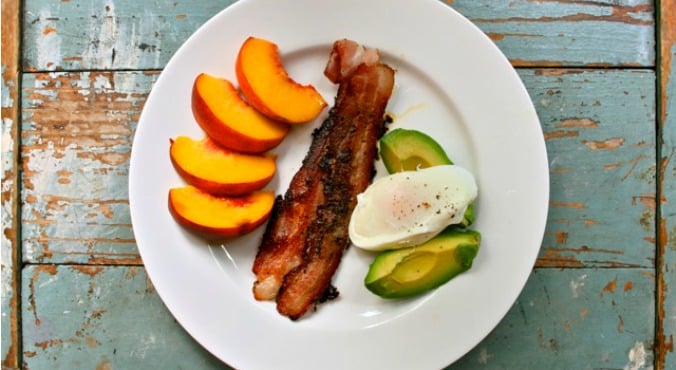
Image: Paleo food, best eaten off a shabby chic tabletop, just like our ancestors did (via Flickr)
Over the next couple of weeks, we’re going to be counting down the most popular posts on The Glow from this year.
More than a decade ago I was compiling research on our hunter-gatherer ancestors’ diets. Outside of nutrition research circles no one was particularly interested in the topic. Fast-forward to today and everyone seems to talking about Paleo. So is it as fab as claimed, or just another passing fad? The basic premise of ‘paleo’ is that since our genes have not appreciably changed since Paleolithic times, the diet of ancestors from that era is the one that we evolved on, and is best suited to our genetic makeup. The argument goes that many of our current health woes, including cardiovascular disease, diabetes and obesity, are caused by the mismatch between our modern diet and our ancient bodies.
The truth is there was no one paleo diet.
The first question therefore is what did our paleo ancestors eat? The truth is there was no one paleo diet. As a species we have been remarkable in our ability to adapt to the diet available to us. The “true” paleo diet therefore varied depending on geographical, seasonal and climactic changes. Flexibility when it comes to food has been part of our success as a species. Nevertheless we can make some broad conclusions. Essentially paleo men and women ate more protein and less carbohydrate than modern diets, but importantly they were not on low carb diets. In fact the author of the original Paleo Diet book, Dr Loren Cordain, published research showing that paleo is closest to the Mediterranean Diet than to modern low carb or low fat approaches. Yet for some reason I see many people claiming to follow paleo when in fact they are just cutting carbs. Despite the fact that most modern paleo advocates say “no grains and no legumes” there isn’t consensus between palaeontologists about when we began to eat these foods. There is very early evidence of paleo communities soaking legumes and roughly grinding the seeds of grasses (i.e. grains).
